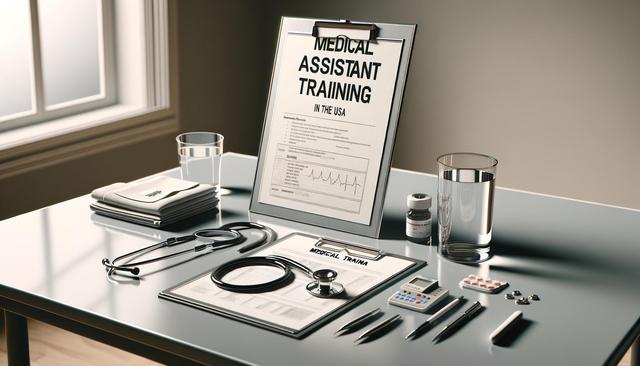Understanding the Role of a Medical Assistant
Medical assistants play a vital part in the daily operations of healthcare facilities across the United States. Their responsibilities often include both administrative and clinical tasks, such as scheduling appointments, managing patient records, taking vital signs, and assisting physicians during exams. This dual role requires a well-rounded education and practical training to ensure competence in a variety of settings, including hospitals, private practices, and clinics.
As the healthcare industry continues to grow, the demand for trained medical assistants is on the rise. This makes medical assistant training a valuable investment for those looking to enter the field. Successful medical assistants tend to be detail-oriented, good at multitasking, and have strong interpersonal skills. They often serve as the first point of contact between patients and the medical team, making their presence crucial for a positive patient experience.
Types of Medical Assistant Programs
There are several educational pathways available for aspiring medical assistants in the USA. The most common options include certificate programs, diploma programs, and associate degrees. Each program type offers different levels of depth and duration, allowing students to choose according to their career goals and time availability.
- Certificate and Diploma Programs: These usually take around 9 to 12 months and focus on core skills needed for entry-level jobs.
- Associate Degree Programs: Typically lasting about two years, these programs offer a more comprehensive education, including general education courses alongside medical training.
Many programs are offered at community colleges, vocational schools, and some universities. Online options are also available and may provide flexibility for those balancing other responsibilities. However, hybrid programs that combine online coursework with in-person lab work or externships are often recommended to gain hands-on experience.
Core Curriculum and Skills Acquired
The curriculum in medical assistant training programs is designed to prepare students for the multifaceted nature of the job. Training typically covers a range of subjects that build both administrative and clinical competencies. These include:
- Medical terminology and anatomy
- Pharmacology basics
- Clinical procedures like phlebotomy and EKGs
- Medical billing and coding
- Electronic health records (EHR) systems
In addition to technical knowledge, soft skills are also emphasized. Communication, confidentiality, and professionalism are key areas of focus, as medical assistants often work closely with patients and medical staff. Many programs include externships or practicum components, which allow students to apply classroom knowledge in real-world settings under supervision.
Certification and Licensing
While certification is not always required by law, becoming certified can significantly enhance job prospects and credibility in the field. Several nationally recognized certifications are available for medical assistants in the USA. These include:
- Certified Medical Assistant (CMA)
- Registered Medical Assistant (RMA)
- National Certified Medical Assistant (NCMA)
- Certified Clinical Medical Assistant (CCMA)
Each certification has specific eligibility requirements, often including graduation from an accredited program and passing an exam. Maintaining certification may also require continuing education or re-examination at regular intervals. Some states may have additional requirements, so it’s important to check local regulations before applying for jobs.
Career Outlook and Advancement Opportunities
The career outlook for medical assistants in the USA is generally positive, with employment opportunities projected to grow over the next decade. This growth is largely driven by an aging population and increased demand for healthcare services. Medical assistants can find employment in various settings, such as physician offices, outpatient care centers, and specialty clinics.
With experience and further education, medical assistants may advance into roles such as:
- Office manager or administrative supervisor
- Clinical team leader
- Medical coding or billing specialist
- Healthcare administration
Some medical assistants also choose to continue their education to become licensed practical nurses (LPNs) or registered nurses (RNs). The foundational skills and knowledge gained during medical assistant training can serve as a stepping stone for further career development in healthcare.
Conclusion: Preparing for a Future in Healthcare
Medical assistant training in the USA offers a practical and structured gateway into the healthcare field. Whether you’re just starting your career or looking to transition into a more hands-on role, the training provides essential skills and real-world experience. With various education paths, certification options, and career advancement opportunities, becoming a medical assistant can be a meaningful and sustainable career choice for individuals interested in contributing to patient care and the wider healthcare system.




Leave a Reply